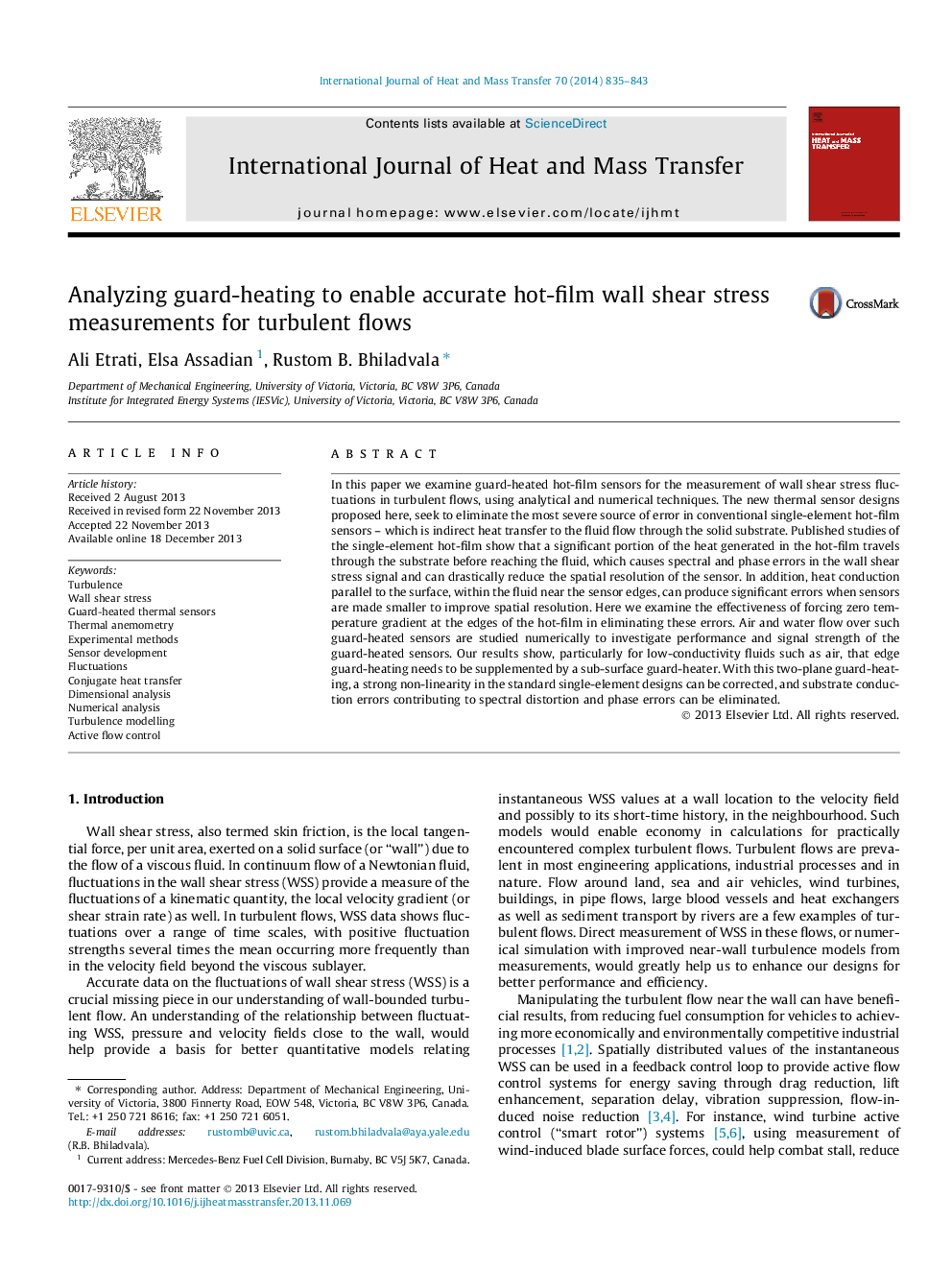| کد مقاله | کد نشریه | سال انتشار | مقاله انگلیسی | نسخه تمام متن |
|---|---|---|---|---|
| 657647 | 1458072 | 2014 | 9 صفحه PDF | دانلود رایگان |
In this paper we examine guard-heated hot-film sensors for the measurement of wall shear stress fluctuations in turbulent flows, using analytical and numerical techniques. The new thermal sensor designs proposed here, seek to eliminate the most severe source of error in conventional single-element hot-film sensors – which is indirect heat transfer to the fluid flow through the solid substrate. Published studies of the single-element hot-film show that a significant portion of the heat generated in the hot-film travels through the substrate before reaching the fluid, which causes spectral and phase errors in the wall shear stress signal and can drastically reduce the spatial resolution of the sensor. In addition, heat conduction parallel to the surface, within the fluid near the sensor edges, can produce significant errors when sensors are made smaller to improve spatial resolution. Here we examine the effectiveness of forcing zero temperature gradient at the edges of the hot-film in eliminating these errors. Air and water flow over such guard-heated sensors are studied numerically to investigate performance and signal strength of the guard-heated sensors. Our results show, particularly for low-conductivity fluids such as air, that edge guard-heating needs to be supplemented by a sub-surface guard-heater. With this two-plane guard-heating, a strong non-linearity in the standard single-element designs can be corrected, and substrate conduction errors contributing to spectral distortion and phase errors can be eliminated.
Journal: International Journal of Heat and Mass Transfer - Volume 70, March 2014, Pages 835–843
